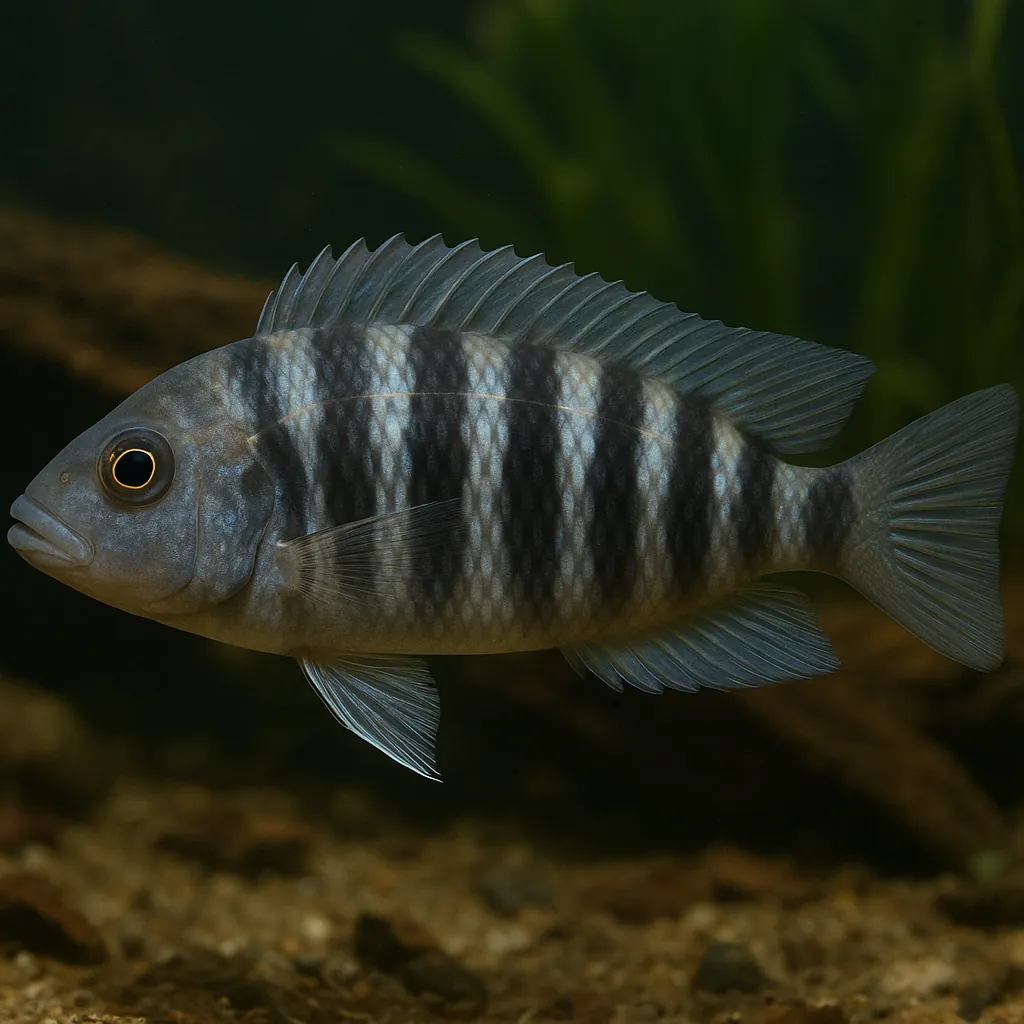
Seven stripe cichlid
Introduction
The Seven Stripe Cichlid (Amatitlania septemfasciata), also known as Cutter's Cichlid, is a captivating freshwater fish native to Central America. Renowned for its striking vertical stripes and manageable size, this species appeals to aquarists seeking a vibrant and active addition to their tanks. With proper care, Seven Stripe Cichlids can thrive in home aquariums, offering enthusiasts the opportunity to observe their intriguing behaviors and interactions.
What makes the Seven Stripe Cichlid a popular choice among aquarists?
Its distinctive appearance, hardy nature, and engaging behaviors make it a favored species for both beginner and intermediate fishkeepers.
Is the Seven Stripe Cichlid suitable for community tanks?
While they can coexist with certain species, their territorial nature requires careful selection of tank mates to ensure harmony.
Care and Environment
Providing optimal care for the Seven Stripe Cichlid involves replicating its natural habitat and meeting its specific needs. A minimum tank size of 150 liters is recommended to accommodate their active nature and territorial behavior. Maintaining water temperatures between 24°C and 28°C, with a pH range of 6.0 to 7.5, creates a suitable environment for these cichlids. Efficient filtration is essential to maintain water quality, as they can be sensitive to poor conditions. Regular water changes and monitoring of parameters will help prevent health issues.
What type of tank setup is ideal for Seven Stripe Cichlids?
Incorporate numerous hiding spots such as caves, tunnels, and overhangs using rocks and driftwood. While they are not particular about plants, ensure any vegetation is well-rooted or epiphytic, as these cichlids are known to dig. Hardy plants like Java Fern or Anubias attached to decorations can withstand their digging behavior.
What should I feed my Seven Stripe Cichlid?
As omnivores, they thrive on a varied diet. High-quality cichlid pellets or flakes serve as a staple, supplemented with live or frozen foods like bloodworms, brine shrimp, or daphnia. Occasionally offering blanched vegetables such as zucchini or spinach ensures balanced nutrition and enhances their coloration.
Are there any specific challenges in keeping Seven Stripe Cichlids?
Their territorial and semi-aggressive nature, especially during breeding, requires careful tank mate selection and adequate space to establish territories. Additionally, their digging behavior may disrupt plants and substrate, necessitating secure decorations and plant choices.
Origin and Habitat
Native to the Atlantic slope of Costa Rica, the Seven Stripe Cichlid inhabits river systems between the San Juan River drainage and the Banano River. These environments are characterized by moderate to strong currents, rocky substrates, and abundant hiding spots among submerged structures. The natural habitat's water parameters typically include temperatures ranging from 24°C to 26°C and a neutral pH around 7.0. Replicating these conditions in captivity supports their health and natural behaviors.
Where can Seven Stripe Cichlids be found in the wild?
They are endemic to specific river systems in Costa Rica, particularly between the San Juan River drainage and the Banano River.
What are the typical water conditions in their natural habitat?
They thrive in waters with temperatures of 24°C to 26°C and a neutral pH of about 7.0, often with moderate to strong currents and rocky substrates.
Temperament and Compatibility
Seven Stripe Cichlids exhibit semi-aggressive and territorial behaviors, especially during breeding periods. They establish and defend territories, making them best suited for species-specific setups or tanks with other robust fish of similar size and temperament. Suitable tank mates include other Central American cichlids like Firemouths or Convicts, as well as larger, fast-moving species such as Giant Danios or Red Tail Sharks. Avoid housing them with smaller, more delicate fish, as they may become targets of aggression. Providing ample hiding spots and visual barriers helps reduce stress and aggression by allowing each fish to claim its own territory.
Can Seven Stripe Cichlids be kept with other fish?
Yes, but it's essential to choose tank mates carefully. Opt for similarly sized and tempered species to minimize aggression.
How can I reduce aggression in my Seven Stripe Cichlid tank?
Ensure the tank is spacious with plenty of hiding spots and visual barriers to allow each fish to establish its own territory.
Interesting Facts
Seven Stripe Cichlids are known for their diligent parental care. Both parents actively guard and care for their fry, a behavior that provides fascinating observations for aquarists. They are also cave spawners, often choosing secluded spots within the tank to lay their eggs. Additionally, their tendency to dig and rearrange the substrate is a natural behavior that can be both entertaining and a consideration when designing the aquarium setup.
Do Seven Stripe Cichlids exhibit unique breeding behaviors?
Yes, they are cave spawners and both parents are actively involved in guarding and caring for their offspring.
Why do Seven Stripe Cichlids dig in the substrate?
Digging is a natural behavior used for creating spawning sites and establishing territories.
Sources
All information in this article has been gathered from the following reputable sources:
Overview
Recommended Tank Size 52.8 Gallons (for pairs or small groups) |
Minimum Group Size 1 |
Minimum Tank Volume 39.6 Gallons |
Maximum Adult Length 5.9 inches |
Average Adult Length 4.7 inches |
Shoaling (6+ required) No |
Preferred Water Type Freshwater, neutral pH |
Temperature Range (°C) 24–28 |
pH Range 6.0–7.5 |
Water Hardness (dGH) 6–12 |
Typical Lifespan (years) 8 years |